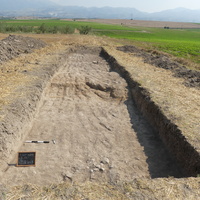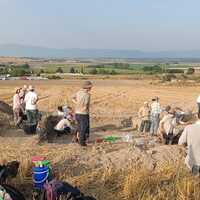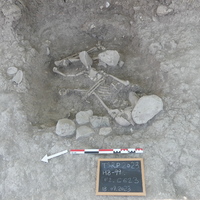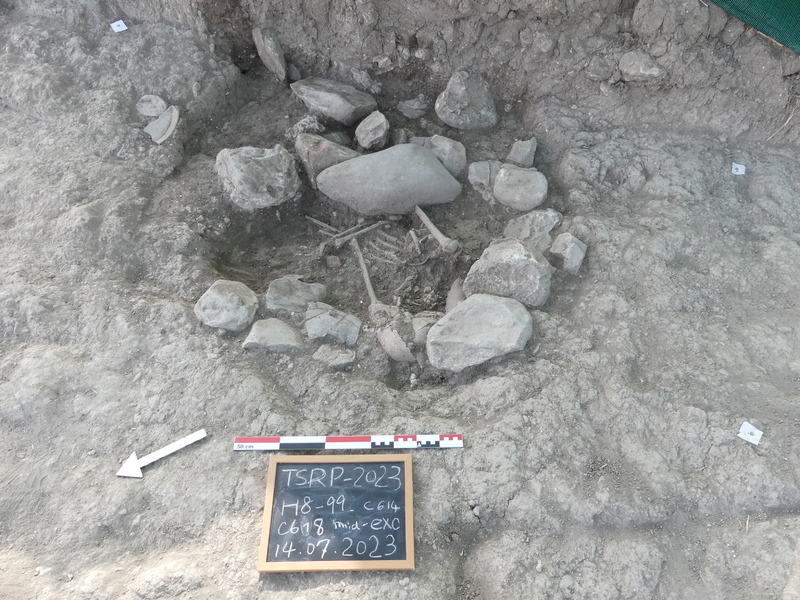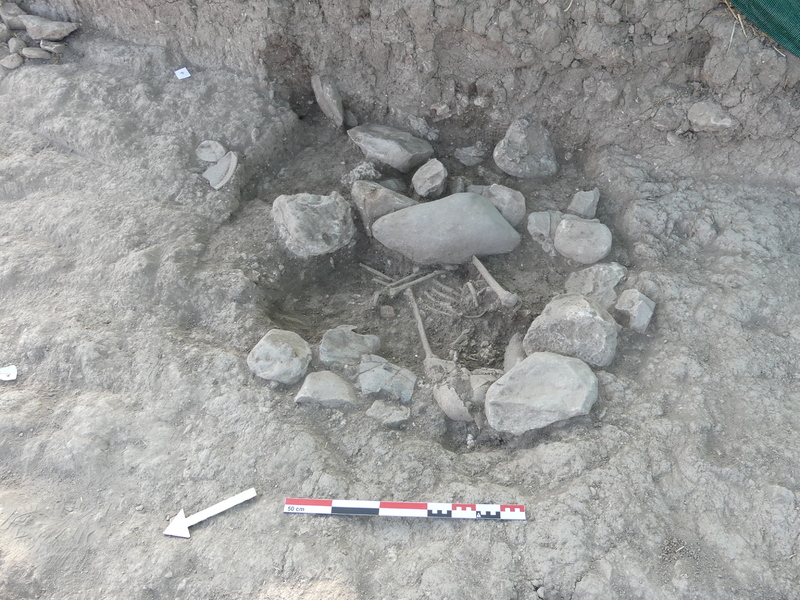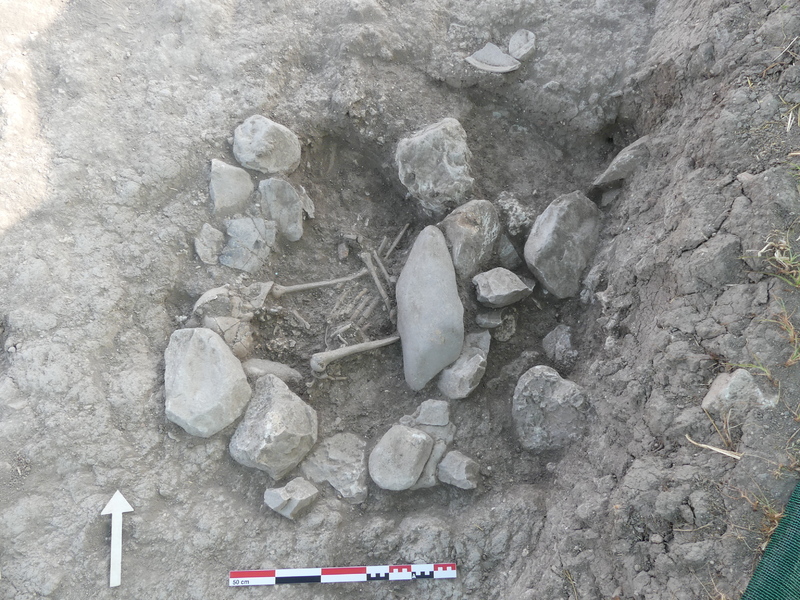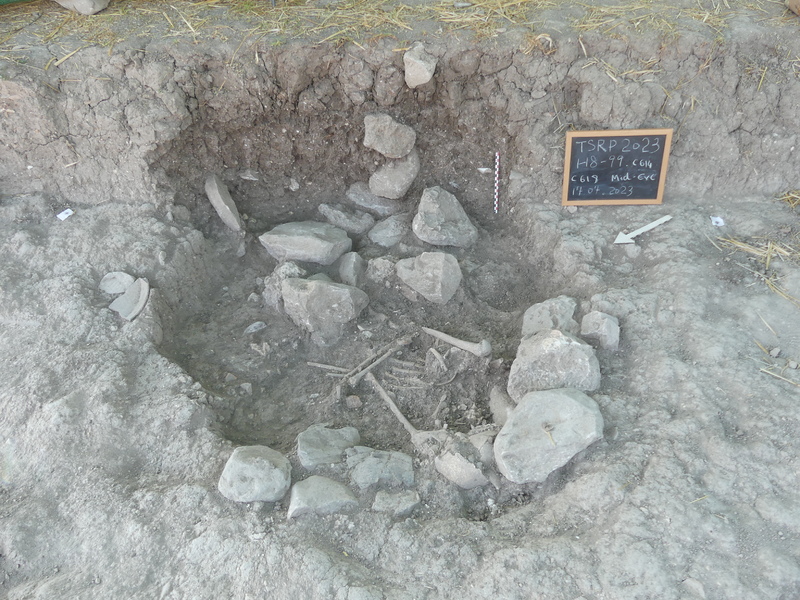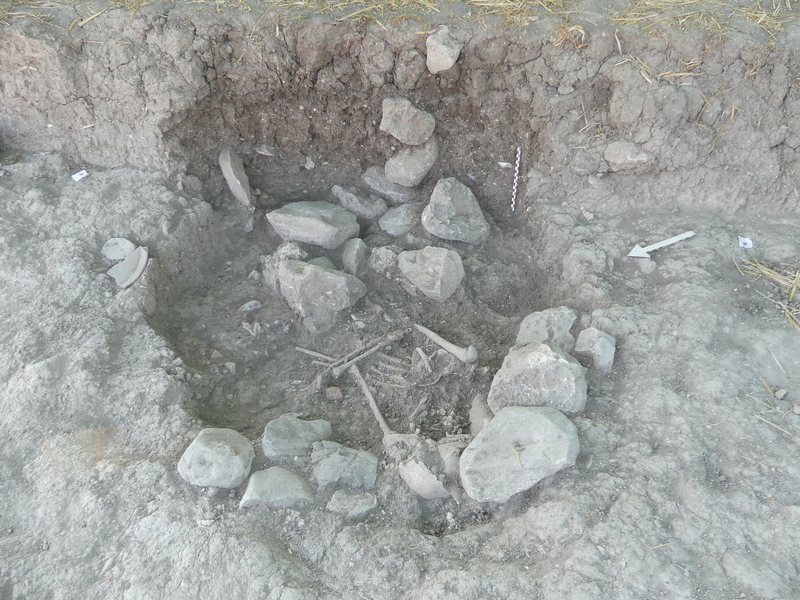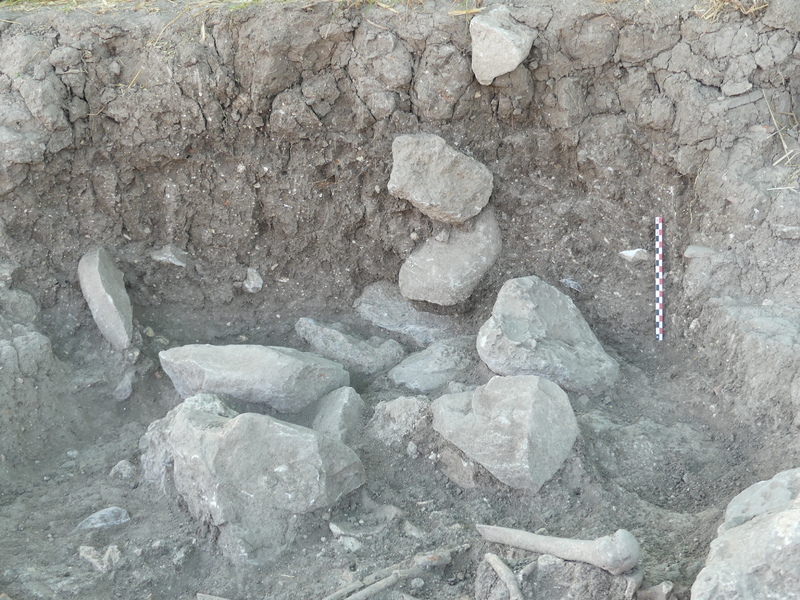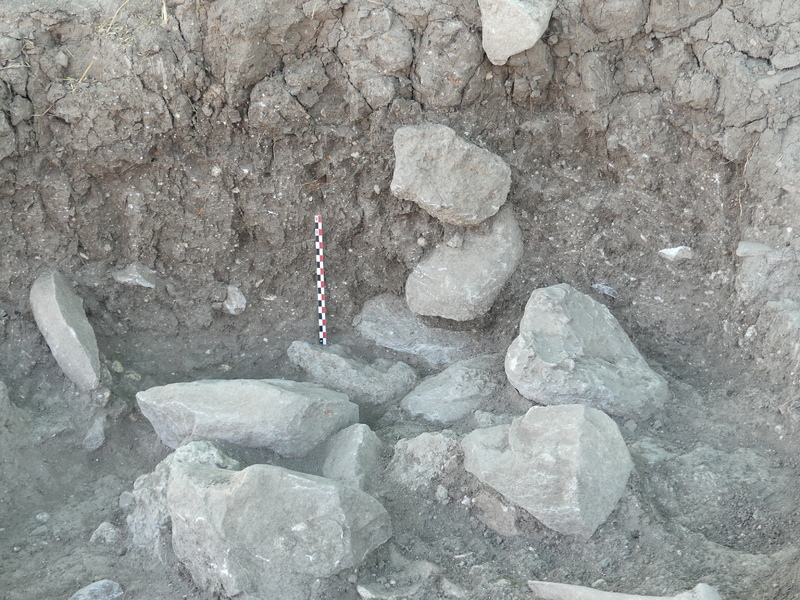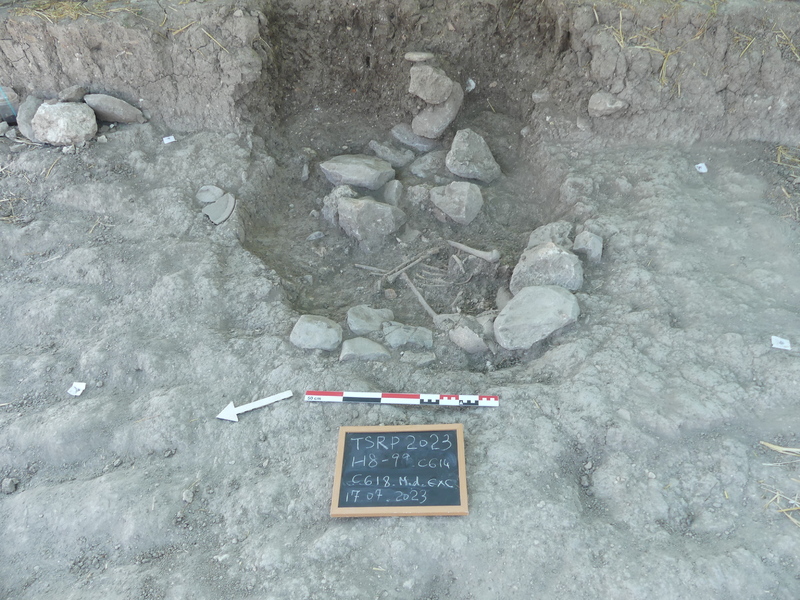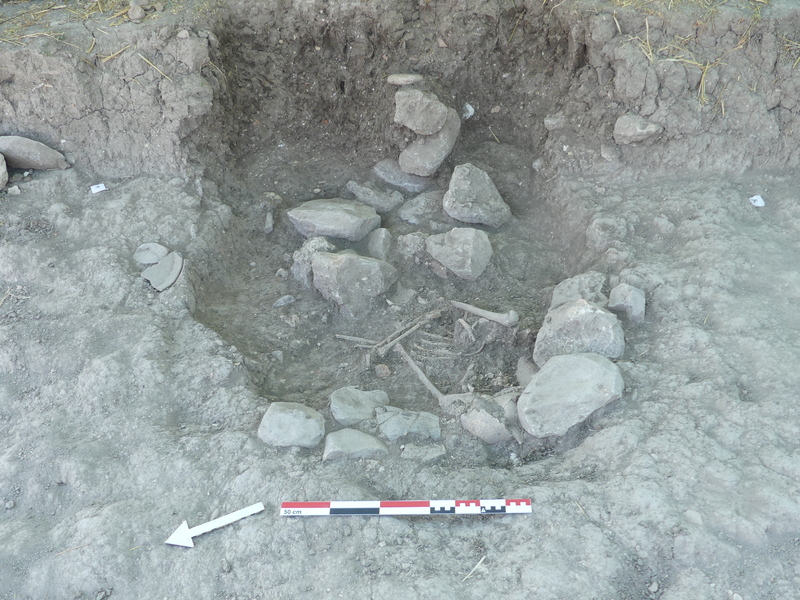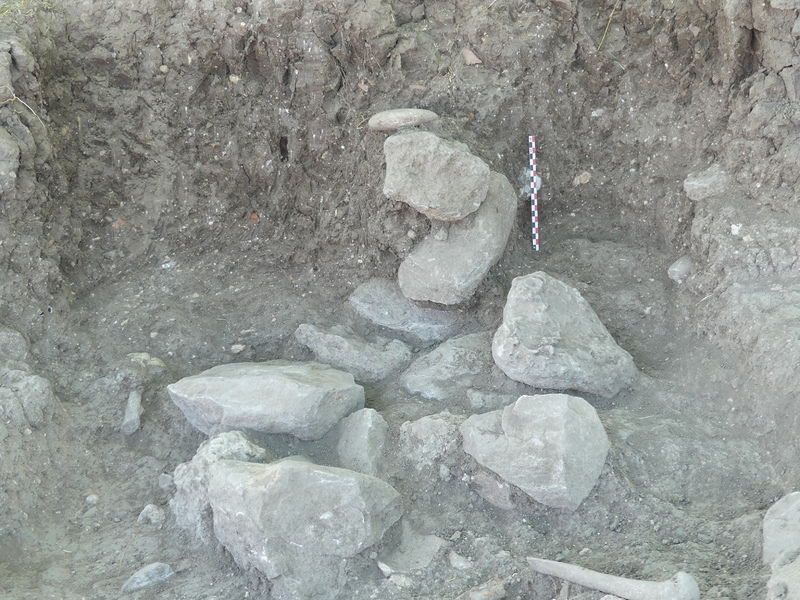The context 614 corresponds to the central portion of the burial, composed primarily of stones and a few pieces of clay building material (CBM). It is contemporaneous with and equivalent to context 618, which initially represented the outer row of the cover. For this reason, both contexts will be described together. Additionally, it is synchronous with the central stone, context 626.
The burial cover, which encases the entire grave (1.35 m in length by 1.20 m in width) and has a generally oval shape, consists predominantly of angular stones ranging from 15 cm to 40 cm in length, with a few pieces of clay building material. The cover has been slightly damaged by modern ploughing. During excavation, it was possible to identify an outer row of stones (c618) running along the edges of the grave, particularly on the southern, northern, and western sides. On the western side, the stones were positioned on the upper small step of the cut.
In the central area, a thicker accumulation of stones and clay building material had collapsed into the pit, resulting in damage to the skeletal remains, particularly affecting the middle section of the skeleton through to the lower limbs. Seven pieces of clay building material, ranging from 7 cm to 30 cm in length, were discovered at the bottom of the layer.
The space between the stones was filled with loose soil (c629), either added to the stones or infiltrating over time.
The deposits c608 and c617 were found on these contexte as well as the stone c626. Therefore, it is hypothesized that this construction functioned both as a burial cover and as a burial marker.























